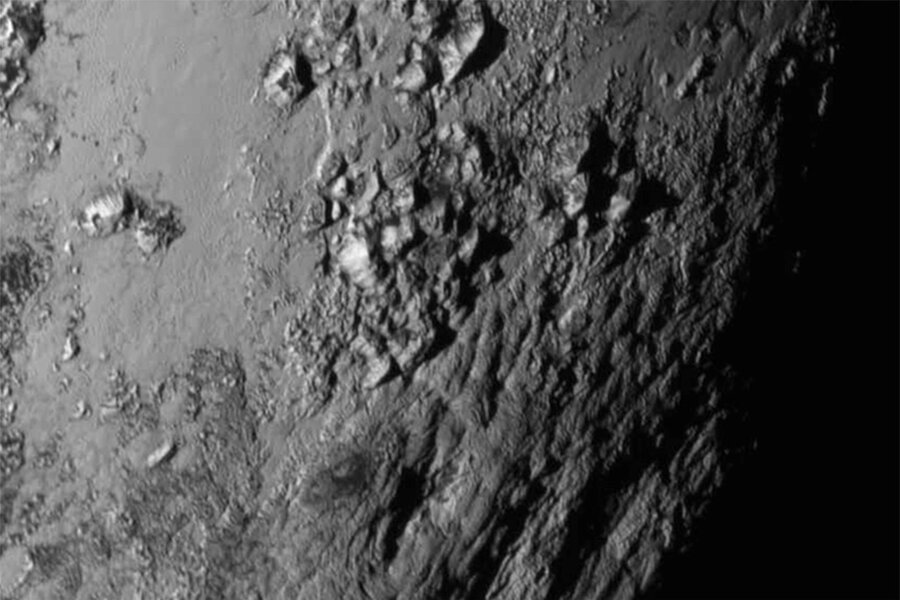Pluto in pictures: a visual timeline of our changing view of icy orb
Loading...
NASA's historic flyby of Pluto this week has brought the world some breathtakingly crisp images of the dwarf planet. The New Horizons spacecraft began its 3.6-billion-mile journey to Pluto nine years ago. But the fascination with Pluto began nearly a century ago, when a young astronomer first identified our solar system's ninth planet.
Pluto has since been demoted to the status of dwarf planet, but the icy orb has continued to capture the Earthling imaginations.
Here's a visual chronology of our evolving view of Pluto, from the beginning.
Clyde Tombaugh, a 23-year-old newcomer to Arizona's Lowell Observatory was charged with the task of locating "Planet X," the mysterious ninth planet that had been hypothesized based on gravitational pattens.
Over a period close to a year, Dr. Tombaugh scanned the night sky and took images of space in an attempt to see whether any object had changed position. Using photographic plates taken on Jan. 23 and Jan. 29, 1930, the young astronomer first discovered an apparent motion, later confirming that he in fact had found what he was looking for, a celestial object that would eventually be given the name Pluto.
Ideas about the appearance of Pluto and its surface were mainly relegated to conjecture until NASA's launch of the Hubble Space Telescope in 1990. Using images from Hubble's Faint Object Camera along with data gathered from the telescope, scientists were able to construct an image of the planet's surface for the first time.
In 2005, the Hubble Space Telescope was able to capture another image of Pluto which and discovered the possibility of additional natural satellites around the planet besides its main moon, Charon. The two moons captured as specks of light to the right of the planet would later be named Hydra and Nix.
In 2006, the International Astronomical Union developed an official definition of planet and booted Pluto off the list because it had not "cleared the neighborhood around its orbit." The decision was controversial and led to petitions to reinstate Pluto among the planets of the solar system that students had been drawing in elementary school for decades.
Another series of higher-resolution shots of the planet's surface was constructed using images taken in 2002 and 2003 by the Hubble Space Telescope and released in 2010. Construction of the images took four years and 20 computers working simultaneously and they revealed, for the first time, the possible color and landscape of the now-dwarf planet's surface.
In 2006, the New Horizons space probe was launched by NASA with the mission of visiting and studying Pluto and its moons, as well as the objects and bodies in the mostly unexplored Kuiper Belt, of which the dwarf planet is a part.
The spacecraft made its way 3.6 billion miles through the solar system, flying by Jupiter along the way, until it approached Pluto earlier this month. The countdown until Pluto's flyby gathered massive media attention as scientists and the public waited for the first images to be transmitted back across space.
Scientists who had worked on New Horizons project for more than a decade received word of a successful flyby of Pluto on July 14. With New Horizons' brief visit it became the first spacecraft to visit the dwarf planet and the United States became the first country to send spacecraft to the nine pre-2006 planets.
Scientists at NASA started receiving high-resolution images of Pluto and its main moon Charon, culminating with the highest resolution snapshot, which cast a new light on the Pluto's surface and landscape.
Earthlings were particularly smitten by a particular shot of Pluto with a formation in the shape of a heart.
New Horizons was also able to capture images of Pluto's vast mountain ranges, which some scientists say could be a clue that there may be water on the dwarf planet.




















